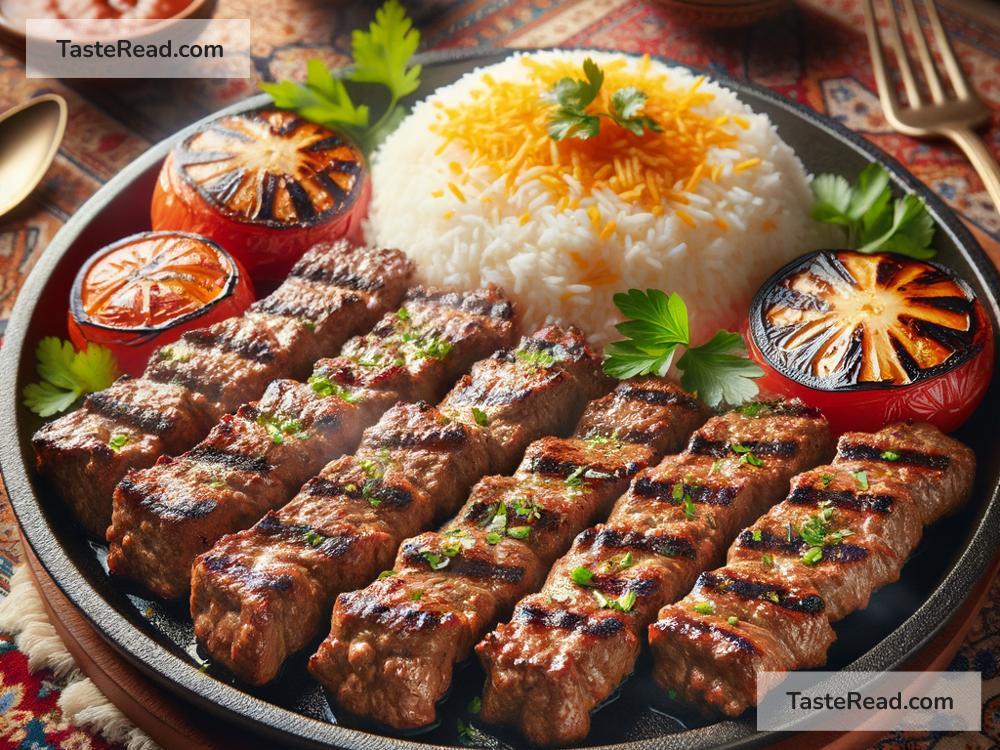Why Iranian Kebab is the Ultimate Grilled Meat
Imagine a world where the aroma of spices and grilled meat fills the air, tempting your taste buds and promising a culinary adventure. This is not just any grilled meat we’re talking about; it’s the Iranian kebab, a dish that stands out in the vast universe of grilled delicacies. What makes Iranian kebab the ultimate grilled meat isn’t just its mouthwatering taste, but a combination of history, preparation, and cultural significance that weaves a narrative of culinary mastery.
Kebabs have been a staple in Middle Eastern cuisine for centuries, but there’s something special about the Iranian version that sets it apart. It’s not just food; it’s a cultural icon, reflecting the rich history and traditions of the Iranian people. From the bustling streets of Tehran to the serene landscapes of Shiraz, kebabs are a common thread that ties the diverse tapestry of Iran together.
The magic of Iranian kebab starts with its preparation, a process steeped in tradition and perfected over generations. Different types of meat can be used, including lamb, chicken, or beef, but the key is in the marination. The meat is marinated in a mixture of onions, yogurt, and a blend of spices unique to Iranian cuisine, such as saffron, sumac, and turmeric. This not only tenderizes the meat but also infuses it with flavors that are rich, complex, and utterly unforgettable.
But what truly elevates Iranian kebab to the status of the ultimate grilled meat is its cooking method. Traditionally, the marinated meat is skewered and grilled over hot coals, a technique that dates back centuries. The high heat of the coals sears the meat quickly, locking in the juices and creating a crisp exterior that encases a tender, succulent interior. It’s this perfect balance of textures, combined with the smoky flavor imparted by the coals, that makes every bite of an Iranian kebab a moment to savor.
Another aspect that sets Iranian kebab apart is the variety it offers. There are several types of kebabs, each with its own unique method of preparation and blend of spices. For example, the Kabab Koobideh, made from ground meat mixed with onions and spices, has a soft, succulent texture that melts in your mouth. Then there’s the Joojeh Kebab, marinated chicken pieces that are grilled to perfection, offering a lighter but equally flavorful option. And let’s not forget the Kabab Barg, thin slices of marinated lamb or beef that are grilled until they’re tantalizingly crispy on the edges but tender and juicy in the middle.
But the allure of Iranian kebab isn’t just about the meat. It’s traditionally served with a side of fragrant basmati rice, a slice of raw onion, and a grilled tomato, which add layers of flavor and texture to the dish. The rice, with each grain distinct and flavored with saffron, serves as the perfect canvas for the rich and savory kebab. The raw onion adds a sharp bite that cuts through the richness, while the grilled tomato lends a sweet and smoky contrast.
In Iran, eating kebab is not just about satisfying hunger; it’s an experience, a way to bring people together. Whether it’s a family gathering, a celebration, or just a regular meal, kebabs are a symbol of hospitality and generosity. It’s common to see Iranians, young and old, gathered around a table laden with kebabs, sharing stories and laughter. This sense of community and shared joy adds an indescribable flavor to the dish that can’t be found anywhere else.
In conclusion, Iranian kebab earns its title as the ultimate grilled meat not just through its exquisite taste but through its embodiment of Iranian culture and tradition. Its preparation, rich with history and technique, and its role in bringing people together, make it more than just food. It’s a celebration of life, a testament to the love and care that goes into Iranian cooking. So, next time you have the opportunity to taste an Iranian kebab, remember, you’re not just biting into a piece of grilled meat; you’re experiencing centuries of tradition, a symphony of flavors, and the warmth of Iranian hospitality.


